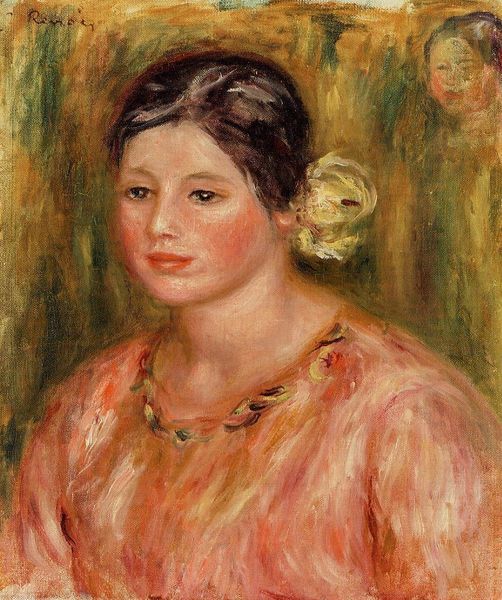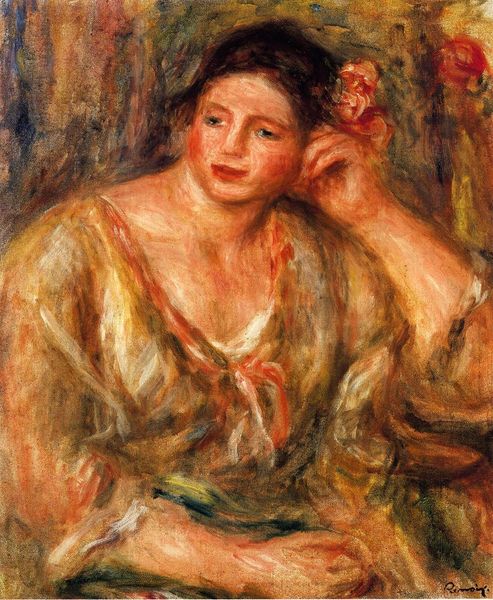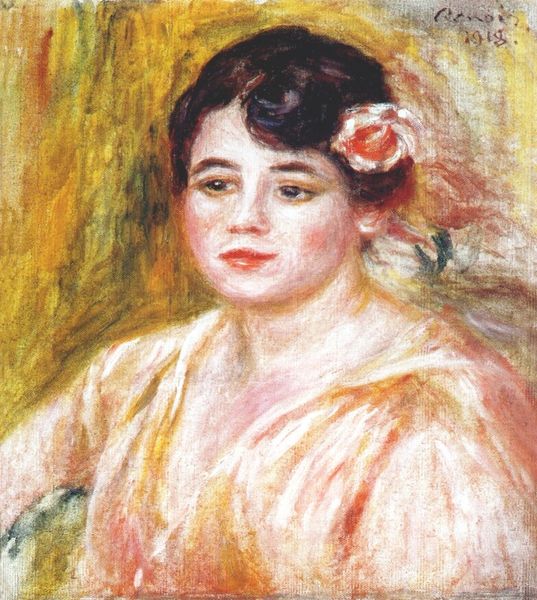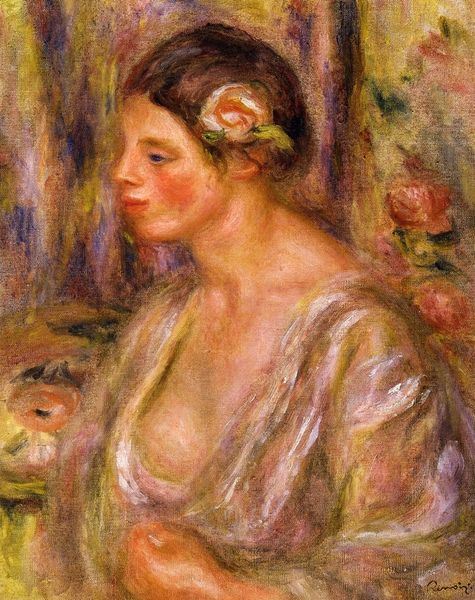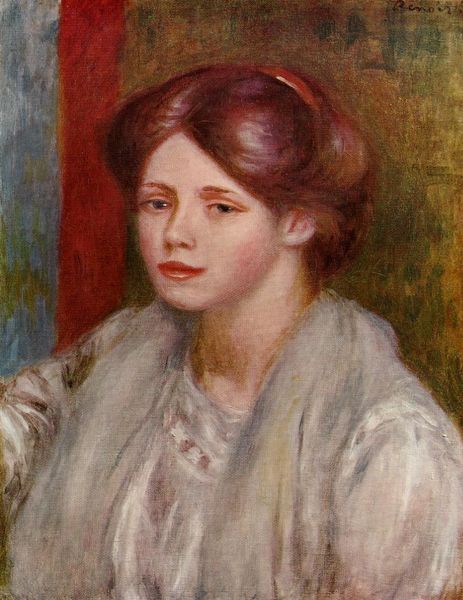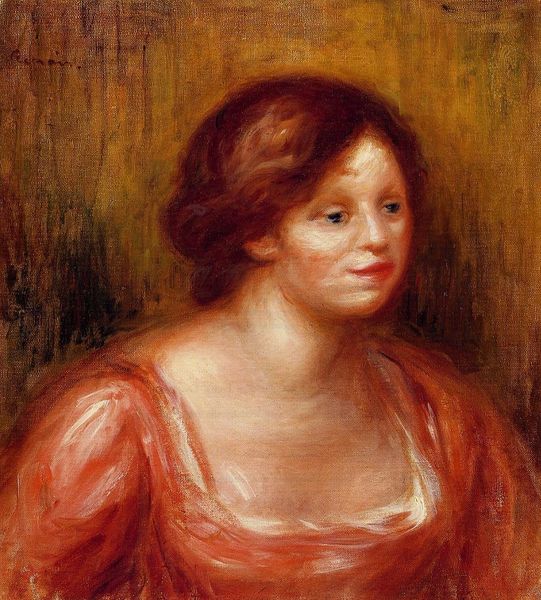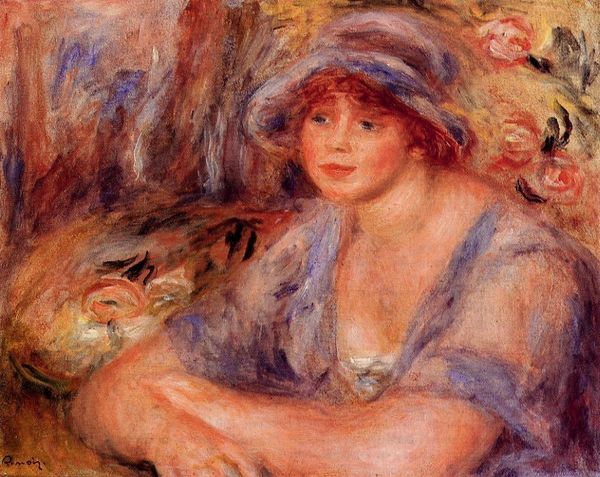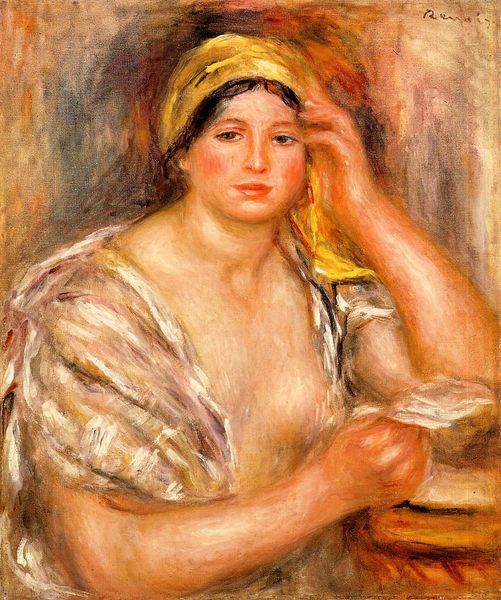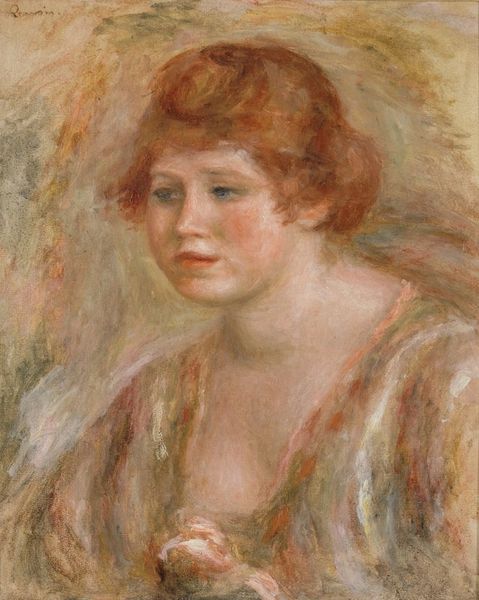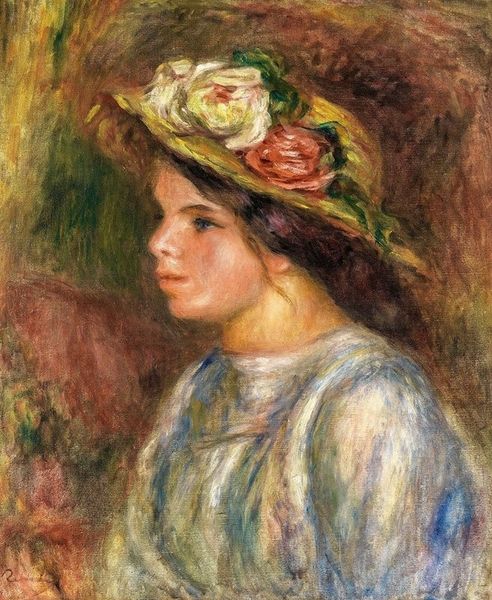
Madelaine in a White Blouse and a Bouquet of Flowers 1919
0:00
0:00
pierreaugusterenoir
Private Collection
Copyright: Public domain
Curator: Pierre-Auguste Renoir painted "Madelaine in a White Blouse and a Bouquet of Flowers" in 1919, just a few months before his death. He used oil paint to realize this particular genre painting. Editor: It’s so delicate. The composition feels like a warm embrace, those soft, rosy hues enveloping the figure in a comforting light. It feels… nostalgic. Curator: Renoir painted it at a time of profound social upheaval after World War I, but notice the absence of any war iconography, and consider the role of gender here. Is this work suggesting women represented hope or a return to simpler times? Editor: The rose in her hair and the bouquet—those are recurring symbols in art history, aren’t they? Roses often signify love, beauty, but also transience. The transient nature of youth and beauty is implied here by the use of such fleeting symbols. Curator: Indeed. Some might even argue, based on her downcast eyes, that there's an element of melancholy here, a quiet reflection on the changing roles of women at the close of the war. The gaze of women during this period could signal quiet resistance. Editor: Melancholy or contemplation… Her pose seems studied, and the white blouse and flowers almost echo a traditional Venus figure, yet made modest. Curator: Interesting point. There’s an undeniable connection to classical ideals of beauty, albeit through Renoir's Impressionist lens. Consider what it means to place an ordinary girl in this lineage. Editor: It democratizes the symbols of beauty. Every woman could be seen as an ideal. She may be called Madelaine but, essentially, she could be anybody. It suggests that the sacred beauty is not some far-off goal but, in fact, always near. Curator: By painting "Madelaine" at the end of his career, Renoir both honored tradition and subverted its established symbols. I keep returning to how the lack of direct engagement complicates what could have easily become sentimental. Editor: And I see now how Renoir used familiar, comforting visual symbols to suggest more profound meanings behind Madelaine’s tranquil facade. Thank you!
Comments
No comments
Be the first to comment and join the conversation on the ultimate creative platform.
